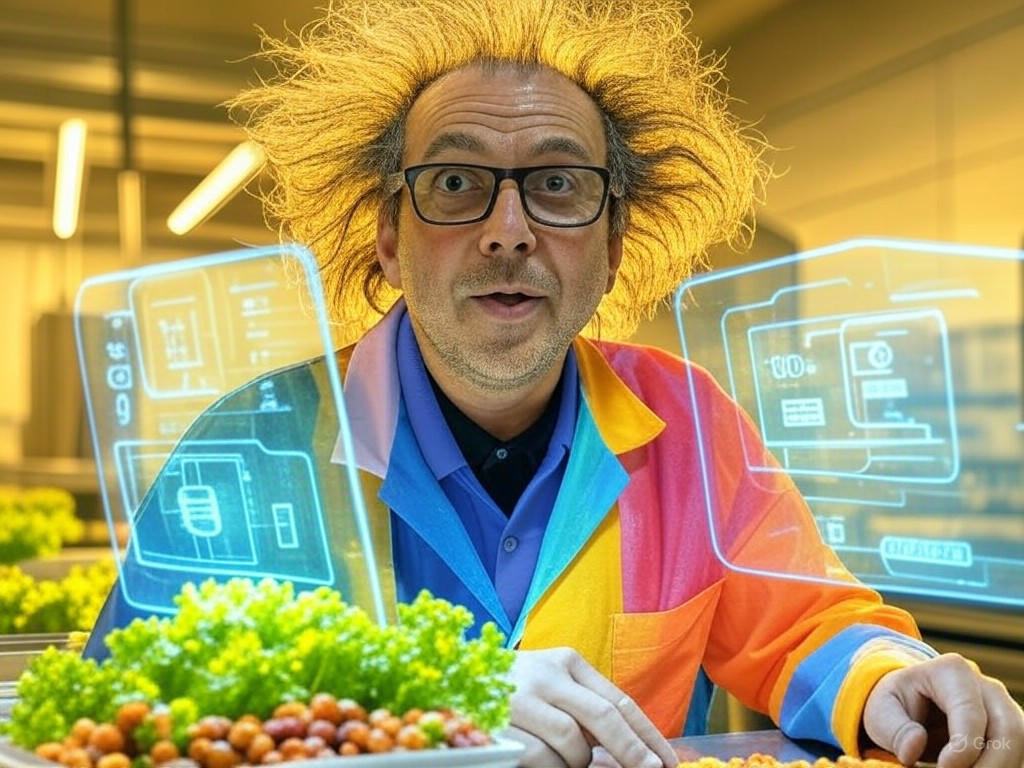
AI Enhances Pet Food Plant Training and Knowledge Retention
In the evolving world of AI in pet food manufacturing, innovative technologies are transforming how companies train employees and preserve essential knowledge. As pet food manufacturers adapt to challenges like workforce changes and rising quality demands, AI is stepping in to streamline processes, boost efficiency, and ensure long-term success. This article explores how these advancements are making a real difference, helping facilities operate smarter and more effectively.
How AI in Pet Food Manufacturing Tackles Core Challenges
AI in pet food manufacturing is revolutionizing the industry by addressing pressing issues such as retiring experts and labor shortages. By May 2025, many companies are leveraging these tools to capture institutional knowledge, making it easier for new hires to get up to speed quickly. Imagine a factory where decades of expertise are digitized, ensuring that even as workers retire, their insights remain accessible for ongoing operations.
This approach not only mitigates knowledge loss but also aligns with growing consumer expectations for premium pet food. For instance, when a seasoned technician leaves, AI systems can analyze their methods to create reusable guides, reducing the risk of errors and maintaining high production standards. Have you ever wondered how companies keep their edge in a competitive market? It’s often through smart investments like AI that preserve and enhance human expertise.
Preserving Institutional Knowledge with AI
One key benefit of AI in pet food manufacturing is its ability to safeguard tacit knowledge—the unwritten tips and tricks that experts develop over years. Traditional methods often fail to capture this, leading to gaps when veterans retire, but AI changes that by recording and organizing it systematically.
Through techniques like video analysis of skilled workers or converting verbal advice into searchable databases, AI ensures this knowledge stays alive. For example, a plant operator’s “rules of thumb” for adjusting extrusion machines can be turned into interactive algorithms, helping newcomers troubleshoot issues without constant supervision. This not only fosters continuity but also empowers teams to innovate, asking: What if your factory could learn from its own history?
Boosting New Employee Training Through AI in Pet Food Manufacturing
Training in pet food plants has long been a bottleneck, relying on outdated manuals and on-the-job shadowing. Now, AI in pet food manufacturing offers personalized, efficient alternatives that cut down learning curves and improve retention rates. By adapting to individual needs, these systems make training more engaging and effective from day one.
Consider virtual reality simulations where trainees practice handling machinery in a safe environment, receiving instant feedback to refine their skills. This method not only speeds up onboarding but also ensures consistency across shifts. As a practical tip, manufacturers can start by integrating AI platforms that track progress, allowing managers to identify and address weaknesses early—what better way to build a confident, knowledgeable team?
Real-Time Support in Daily Operations
AI doesn’t stop at initial training; it provides ongoing assistance during everyday tasks, which is crucial in the fast-paced world of pet food manufacturing. Workers facing unexpected problems, like equipment glitches, can get instant advice from AI systems drawing on historical data and preserved expertise.
For instance, if extrusion parameters fluctuate, an AI assistant might suggest adjustments based on past successes, minimizing downtime and waste. This real-time help keeps production flowing smoothly, even in high-pressure scenarios. It’s a game-changer for efficiency, and you might ask yourself: How could this level of support transform your own operations?
AI’s Impact on Recipe Formulation and Production
Beyond training, AI in pet food manufacturing is optimizing core processes like recipe development and output, leading to better quality and cost savings. These innovations allow for precise adjustments that were once nearly impossible, helping companies meet diverse pet needs while staying profitable.
Precision in Formulating Pet Food Recipes
AI algorithms are elevating recipe formulation in pet food manufacturing by predicting outcomes based on variables like ingredient quality and pet-specific requirements. This means creating tailored formulas for different breeds or ages without the guesswork of traditional methods.
Actionable advice: Use AI to test virtual prototypes, adapting recipes in real time to fluctuating raw materials while hitting nutritional goals. A relatable example is customizing food for senior dogs, ensuring optimal health benefits without excess waste—it’s like having a digital nutritionist at your fingertips.
Gaining Efficiency and Savings in Production
In processes like extrusion, AI in pet food manufacturing predicts optimal settings to reduce errors and enhance energy use. A case in point is how it minimizes over-formulation, cutting costs significantly.
According to a study, facilities using AI tools have seen annual savings of up to half a million EUR by optimizing parameters and reducing rework. This not only boosts the bottom line but also supports sustainability, such as lowering energy consumption—think of it as a smart upgrade that pays for itself over time.
Building Smart Pet Food Factories
The rise of smart pet food factories, powered by AI, is turning visions into reality, with systems that analyze data for seamless adjustments. In these setups, AI in pet food manufacturing monitors everything from recipes to supply chains, ensuring peak performance.
Benefits include real-time tweaks for quality control, like detecting flaws in products before they leave the line. A hypothetical scenario: Your factory uses AI to adjust for ingredient shortages, maintaining consistent taste and texture—how would that change your production strategy?
Overcoming Challenges in AI Adoption
While AI in pet food manufacturing offers clear advantages, adoption isn’t always straightforward, with hurdles like high initial costs and system integration. Many companies hesitate due to these factors, but the long-term gains make it worthwhile.
Strategies to overcome this include starting small, such as piloting AI for knowledge retention before full rollout. Pioneers like those using BESTMIX® Software have shared success stories, proving that with proper planning, these challenges can be managed effectively.
The Strategic Edge of Embracing AI
For pet food manufacturers, AI represents a pathway to greater agility and competitiveness. It frees up staff for creative roles while enhancing product customization and environmental responsibility.
In a tightening labor market, this tech-driven approach ensures businesses thrive by focusing on innovation rather than routine tasks. As an example, AI can help produce premium lines at scale, giving companies a market advantage.
Future Trends in AI for Pet Food Manufacturing
Looking ahead, AI in pet food manufacturing will likely include autonomous systems for decision-making and personalized pet health solutions. These developments could drastically cut downtime and promote eco-friendly practices.
Experts predict AI will evolve to handle complex predictions, like optimizing recipes based on individual pet data. If you’re in the industry, staying updated on these trends could be key to future-proofing your operations.
Conclusion and Next Steps
AI in pet food manufacturing is proving its value by enhancing training, retaining knowledge, and streamlining production for a more resilient industry. As we’ve seen, these tools not only solve immediate problems but also pave the way for innovation and growth.
If you’re a manufacturer, consider exploring AI integrations to stay ahead—what steps will you take next? We’d love to hear your thoughts in the comments, share this article with colleagues, or check out our related posts on sustainable manufacturing practices.
References
- “Report: AI Opens Doors to Pet Food Innovation,” Pet Food Industry, link.
- “AI Aids New Pet Food Plant Workers and Preserves Institutional Knowledge,” Pet Food Industry, link.
- “How Is Artificial Intelligence Revolutionizing Pet Food Manufacturing?” Pet Treats Machine, link.
- “Pet Food Industry: Adapting Automation, AI, and Robotics,” Gray, link.
- “How to Benefit from AI in the Pet Food Industry: Insights and Practical Cases,” BESTMIX Software, link.
- “Smart Pet Food Factories Using AI to Optimize Recipes and Output,” ESS Feed, link.






